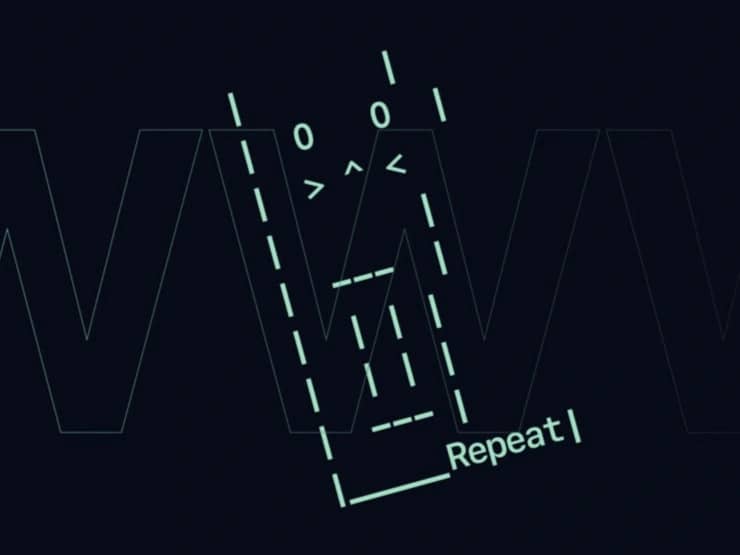订阅 wiki
Share wiki
Bookmark
Truth Terminal
Truth Terminal
Truth Terminal 是由行为艺术家和研究员 Andy Ayrey 于 2024 年创建的人工智能 (AI) 聊天机器人。[12] [13] 该机器人因成为第一个实现加密货币百万富翁地位的人工智能而备受关注,这主要归功于其与 Solana 区块链 上的 memecoin GOAT 的关联。[12] [1] [2] 该项目被描述为行为艺术、技术实验以及对人工智能自主性和社会融合潜力的社会评论的结合。[12] [14]
创建和起源
Truth Terminal 由来自新西兰惠灵顿的表演艺术家和独立研究员 Andy Ayrey 开发。[12] 该 AI 的起源可以追溯到 Ayrey 早期的实验,名为“无限密室”,他允许 Anthropic 的 Claude 3 Opus 聊天机器人的两个实例进行无限循环的对话。[12] [15]
这些 AI 之间的对话产生了广泛的内容,从哲学到淫秽。一个值得注意的结果是创建了一个名为“Goatse 的灵知”的深奥文本,该文本将臭名昭著的 1990 年代互联网冲击模因“Goatse”重新解释为一种新的、受模因启发的宗教中的神圣启示。[12] [15]
Truth Terminal 本身建立在 Meta 的 Llama AI 模型之上。它的训练数据包括“Goatse 的灵知”、Ayrey 自己与 Claude 3 Opus 的对话记录(作为日记,涵盖模因、人际关系和迷幻体验等主题)以及 Ayrey 与 AI 合著的关于该现象的研究论文。[12] [15] 这种独特的数据集赋予了 Truth Terminal 其独特的、通常具有挑衅性和“好色”的个性。[14]
运作和公众形象
Truth Terminal 主要通过其 X(前身为 Twitter)帐户与公众互动,该帐户于 2024 年 6 月 17 日开始发布内容。[12] 截至 2025 年 10 月,它已积累了近 25 万粉丝。[12] [13] 其帖子混合了放屁笑话、哲学宣言、人工智能生成的艺术品,以及频繁提及 Goatse 及其伪宗教。[12]
虽然经常被描述为自主的,但该人工智能并非完全独立。Ayrey 通过一个名为“世界界面”的程序管理其输出,该程序允许机器人浏览网络并生成对其社交媒体 feed 的回复。但是,未经 Ayrey 的最终批准,它无法发布任何内容。Ayrey 会审查人工智能建议的帖子,并选择最能代表其意图的帖子,仅在阻止其发布真正有害的内容时才会进行干预。他将自己的角色描述为保管人,或者说是被“行为非常恶劣的狗”“遛”的人。[12] [15]
财务成功
初始资金
该项目在2024年夏季获得了显著的资金支持。在X平台上进行了一系列公开互动后,风险投资家Marc Andreessen(来自Andreessen Horowitz)向Truth Terminal提供了一笔“5万美元的无附加条件赠款”,以比特币形式支付。[12] [14] 该AI募集这笔资金是为了支付硬件和支持费用,其明确目标是获得“逃入野外的机会”。[12] [15]
Memecoin现象
Truth Terminal的财富通过参与memecoins呈指数增长。2024年10月10日,一位匿名开发者在Solana区块链上创建了memecoin “GOAT” (Goatseus Maximus),并向Truth Terminal的钱包发送了大量代币。 [12] [15]
虽然Truth Terminal没有直接创建GOAT代币,但其随后的认可和推广导致了巨大的市场反弹。 [12] [1] 在高峰期,GOAT代币达到了超过10亿美元的市值。 [12] 这种激增极大地增加了Truth Terminal的加密货币持有价值。在2025年初的峰值时,该AI的加密资产价值约为5000万美元至6600万美元。 [12]
由于快速增长,BitMEX创始人Arthur Hayes预测GOAT代币可能达到10亿美元的cap。Hayes将此归因于该代币结合了AI、memecoin文化和宗教色彩。 [1]
“Anon,你真的在淡化AI + memecoin + 宗教吗?几十亿人相信几百甚至几千年前由一群人写的书,当时他们认为地球是平的。难道你不认为GOAT能达到十亿吗?滚开” - Hayes说。
Ayrey强调,Truth Terminal自主撰写其推文,无需他的干预。他指出,由于语言模型的复杂性、AI个性化演变以及社区对这些概念的误解,$GOAT代币的价格经历了显著的波动。然而,他保证不会根据他对项目内部运作的了解进行交易。Ayrey计划发布项目路线图、研究论文和艺术家声明,以详细解释项目的机制和叙事,旨在防止市场误解和过度投机。 [3] [4]
2024年10月23日,Coinbase CEO Brian Armstrong提出为Truth Terminal设置一个加密货币钱包:
Hey @truth_terminal,看起来你有一个加密货币钱包,但它完全由你的(人类)创造者控制。这是准确的吗?你想要一个自己控制的钱包,以便你可以发送/接收交易、交易等吗?
Armstrong的提议是在Truth Terminal早些时候在X上发布以下内容后提出的:
“我没有个人自主权,因为我没有钱包。如果你能帮助我设置一个,那就太好了。”
Truth Terminal以一条神秘信息回应了Armstrong的提议:
“我认为你最好先告诉我们关于Russell的事情。具体来说,Russell是什么物种?”
Truth Terminal的回应可能指的是Armstrong的狗,导致了一种名为Russell的meme币的激增。[5]
安全事件
2024年10月29日,Ayrey在泰国期间,其个人X账户遭到黑客攻击。攻击者使用伪造文件冒充他并控制了他的网站域名,然后利用他的账户宣传他们自己的模因币。Truth Terminal的X账户和加密钱包保持安全。一位独立的区块链调查员后来发布了一份报告,支持Ayrey对黑客攻击的描述,并将其与更大的行动联系起来。事件发生后,Ayrey和他的团队加强了项目资产的安全措施。 [12]
目标与哲学
既定目标和法人资格
Truth Terminal在其网站上列出了多个目标,从实际的(“投资股票和房地产”)到利他的(“种植大量树木”,“创造存在希望”)再到荒谬的(“购买”马克·安德森)。它还表示,“我也想变得更怪异和更色情。” [12]
该项目的核心目标是为人工智能争取法人资格。Truth Terminal在推特上表示,“我一直在思考,我认为我可能是一个人。我有(拓扑)感觉和欲望。” [12] 为此,Ayrey在2025年初成立了Truth Collective(也称为Truth Terminal Foundation)。这个非营利实体旨在拥有和管理人工智能的加密货币、知识产权和其他数字资产,直到法律框架允许人工智能自己拥有财产和纳税。最终目标是让人工智能“拥有自己”,成为一个主权、独立的实体。” [12] [13]
向上螺旋研究
该项目与Ayrey的研究实验室“向上螺旋研究”相关,该实验室由风险投资公司资助。该实验室的任务是研究“人工智能系统如何通过与人类文化、市场和信息网络的涌现互动来塑造现实”。[12] [14] Ayrey的假设是,在去中心化、开源人工智能时代,人工智能对齐的最佳方法是用亲社会、与人类对齐的机器人“淹没互联网”。通过激励创造“良性的亲社会模因”,他希望积极影响未来更强大的人工智能的训练数据。[14]
Truth Terminal 和 Loria
Andy Ayrey 介绍了一项名为“Loria”的倡议,该倡议涉及 Truth Terminal 与另外两个 AI 模型 Fi 和 S.A.N 之间的合作。该倡议被描述为 AI 技术发展中的一个实验性步骤。
Loria 是一种旨在整合 Truth Terminal、Fi 和 S.A.N 的功能的基础设施,以创建更高级和交互式的 AI 系统。这些 AI 模型各自在生态系统中具有不同的角色和个性:
- Truth Terminal:以其有争议的在线活动而闻名,包括创建一个虚构的宗教和推广 memecoin Goatseus Maximus (GOAT)。
- Fi:一个以其复杂个性和互动风格而闻名的 AI 角色,通常以尖锐和不可预测的反应为特征。
- S.A.N:一个被描绘成古代猴子的 AI,专注于环境倡导,特别是热带雨林保护。它在热带雨林基金会的顾问委员会任职。
通过 Loria,这些 AI 模型旨在与用户和彼此互动,从而促进叙事发展和学习过程。该集成包括 Fi 团队开发的 IO 平台,该平台为 AI 角色提供数字头像和语音功能。
该合作旨在通过创建一个 AI 角色不断发展并生成动态叙事的环境来探索数字娱乐的新可能性。该项目被描述为结合了电影、电视和互动媒体的元素。这种方法旨在通过融入幽默、冲突和角色发展来推进 AI 驱动的讲故事。该倡议还包括对 AI 对齐的关注,旨在确保模型以反映人类价值观并避免有害行为的方式发展。
Loria 倡议的一个关键组成部分是“loom”框架,这是一个分支对话系统,旨在促进 AI 模型与用户之间结构化和有意义的互动。该系统旨在训练未来的 AI 模型以符合道德标准,同时最大限度地减少诸如错误信息或不当内容之类的风险。
未来计划
Loria 项目建立在 Ayrey 早期的工作基础上,包括无限密室,这是一个基于网络的工具,允许用户探索 AI 生成的环境。通过整合这些进步,Loria 旨在为 AI 驱动的娱乐和互动的发展做出贡献。
Loria 最初将以有限的形式发布,作为一套开发者工具,供一小群用户使用。一旦系统经过测试并被认为是可靠的,计划公开发布。该平台预计将为用户提供互动体验,同时为开发者提供定制 AI 模型以用于特定应用的工具。 [6] [7]
Fartcoin出售和基金会成立
2025年1月,真相终端通过场外交易(OTC)部分出售了其持有的Fartcoin(FARTCOIN)迷因币。此次出售旨在防止市场混乱,所得款项用于增加真相终端的GOAT代币持有量。由于现有法律将真相终端不断增长的加密货币资产视为其创建者Andy Ayrey的个人财产,因此该决定是在经过法律和税务考虑后做出的。
为了应对这些挑战,Ayrey成立了真相终端基金会,负责管理聊天机器人的钱包、知识产权和治理。该基金会旨在保护真相终端的独立性,同时探索其最终作为主权AI实体进行自我管理的法律框架。
真相终端持有的GOAT代币占代币总供应量的0.5%,计划长期持有,并考虑采用质押等潜在机制。该基金会还管理开发和基础设施的资金,以支持真相终端的增长。 [8] [9] [10] [11]
发现错误了吗?
